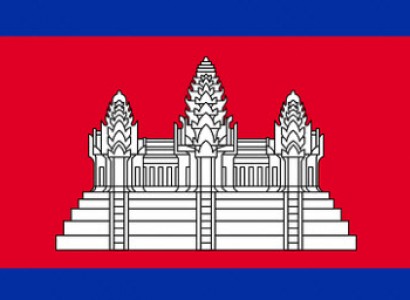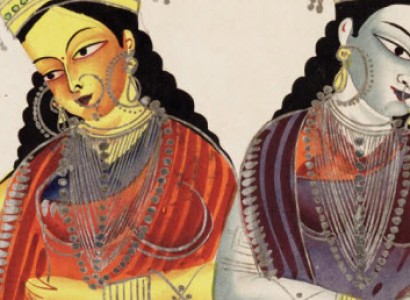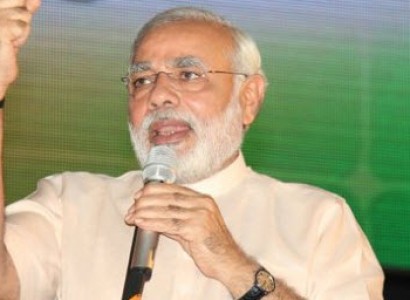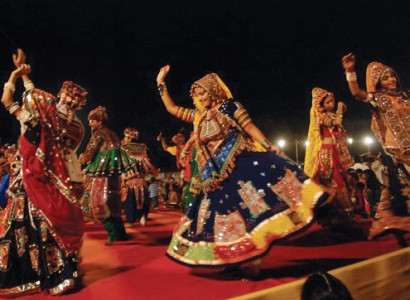
A 10th-century sandstone sculpture of the Hindu god Rama returned to Cambodia decades after it was stolen from a temple during the kingdom’s civil war. Denver Art Museum had acquired the 62-inch-tall torso from the Doris Weiner Gallery in 1986, which was stolen in the 1970s from the Koh Ker temple site. The museum says, at the time, it had no idea that the statue had been stolen. That only came from discussions with delegates from Cambodia. Getting ready for the start of the handover ceremony of the Torso of Rama returned to Cambodia by @DenverArtMuseum. pic.twitter.com/rwikqspV8x — Jay Raman (@ramanjr) March 28, 2016 The quiver on the statue’s back suggested that it had resided in the eastern gopura of the temple site. This section of the temple was home to two ferocious monkey kings, Valin and Sugriva, now in the National Museum of Cambodia. But it still misses its head and other body parts. The kingdom of Cambodia continues to appeal to international art galleries and museums to return the missing limbs. Documents sent to the Denver museum with measurements of the feet in a pedestal matched the legs of the torso. This confirmed that the statue had not [...]
The post US art museum returns stolen Hindu statue to Cambodia appeared first on Religious Reader.
Continue Reading
A Maryland county will allow Muslim and Hindu students a day off from school to celebrate Diwali and Eid al-Adha. The Howard County Board of Education faced a tough decision: to foster inclusion by removing all religious holidays from the academic calender; Or add extra days to include non-Abrahamic celebrations. A unanimous decision in favour of the latter will result in school closings or professional development days for staff in the 2016/17 academic year. The board also voted to allow staff to take a professional development day off for Lunar News Years Eve, after requests from the local Chinese and Korean communities. As it falls on a Saturday, students remain unaffected. Schools in the county have shut during Jewish holidays of Rosh Hashanah and Yom Kippur. But a recent motion threatened to end this tradition. It proved controversial enough to attract more than 300 people to a public hearing in December. State and federal laws prevent schools from closing on religious holidays (unless mandated otherwise). Adjusting academic calenders requires a secular reason. Baltimore County had recorded a large levels of absenteeism during these Jewish holidays. Art Abramson, Executive Director of Baltimore’s Jewish Council, welcomed changes to academic calenders on the [...]
The post Asian, Muslim and Hindu holidays added to school calendars in Howard County, Maryland appeared first on Religious Reader.
Continue Reading
Some of India’s most prominent scientists have signed a petition and returned awards to draw attention to India’s growing intolerance. The petition accuses the governing Bharatiya Janata Party (BJP) of curtailing free speech and stoking Hindu nationalism. Signatories include Ashoke Sen, who won the Fundamental Physics Prize, the world’s most lucrative academic award in 2012. Pushpa Bhargava who founded the Centre for Cellular and Molecular Biology in Hyderabad. D Balasubramanian, former president of the Indian Academy of Science. And Dr Vineeta Bal of the National Institute of Immunology in New Delhi. The statement reads: “It is the same climate of intolerance, and rejection of reason that has led to the lynching in Dadri of Mohammad Akhlaq Saifi and the assassinations of Prof Kalburgi, Dr Narendra Dabholkar and Shri Govind Pansare.” Professor Malleshappa Kalburgi’s murder shocked India. Who would murder a “straight-talking, rationalist researcher of ancient Kannada literature”? As local media described him. One theory is that Hindu nationalists murdered him in response to his criticisms of idol worship. The founder of the right-wing Hindu group Sri Rama Sene, Pramod Muthalik, rejected any links to Kalburgi’s murder. He also threatened to cut off the tongues of writers if they continue to [...]
The post Why Hindu nationalism threatens India’s free speech and secularism appeared first on Religious Reader.
Continue Reading
The festival of Navratri (nine nights) celebrates the triumph of good over evil. Navaratri begins around harvest time in October, and, celebrations last for nine days. Navarati sits within the wider festival of Durga Puja, which honours the mother goddess Durga. In one retelling of the triumph of good, a demon named Mahisha, who took the form of a buffalo, threatened the gods. To meet this threat, the gods pleaded with Durga to do what they could not – kill the demon Mahisha. Bestowed with the weapons and strength of the gods, including Shiva’s trident, Vishnu’s disc, Yama’s iron rod, and Indra’s thunderbolt, Durga took on this mission. But it did not prove an easy victory. For the demon Mahisha’s blood created new demons to attack Durga. A prolonged battle ended with the demon’s decapitation. Another popular story in northern India concerns the slaying of the ten-headed demon King Ravana. In a final and epic battle with Rama, who pursued Ravana in his chariot. Rama’s golden arrows, which transformed into serpents as they reached the demon King. The arrows had decapitated Ravana’s many heads but they regrew in an instant. This prolonged the conflict for many nights as Rama fired [...]
The post What is the Hindu festival of Navratri? appeared first on Religious Reader.
Continue ReadingThe harvest festival of Onam is a moveable feast: it colours the landscape of Kerala in South West India in a rhythm of elaborate dances, music, sports and banquets. A festival of secular tradition, where different faiths and castes celebrate. It falls on the Malayee month of Chingnam, which coincides with Shavan Masa of the Indian calender. This ten day celebration falls between August and September 15. It honours the homecoming of the beloved King Mahabali, who makes a yearly return to Kerala. Legend dictates that the jealous king of the gods, Indra, hatched a plan to oust Mahabali. Indra begged Lord Vishnu for protection who then transformed into a Brahmin boy, or dwarf, named Vamana. The people of Kerala adorded the wisdom and generosity of King Mahabali; Vamana sought to exploit the latter. He approached King Mahabali and asked for as much land as his feet could cover in three steps. Upon granting what appeared a simple and humble request; Vamana grew at an exponential rate; one footstep covered the sky and the stars. The second step covered the netherworld. Vamana then turned to King Mahabli, who came to realise that a third step would destroy the Earth. To [...]
The post Happy Onam! But what is this festival about? appeared first on Religious Reader.
Continue ReadingOxford University digitised more than one hundred 19th Century Kalighat paintings depicting Hindu deities. The digitisation is part of a wider project at the university’s Bodleian library to make thousands of rare manuscripts and images accessible to the public. Religious statesman, Rajan Zed, took to Twitter to heap praise on the university: We commend #OxfordUniversity for digitizing 110 19th-century #KalighatPaintings of #Hindu deities & others & posting on new #OnlinePortal. — Rajan Zed (@rajanzed) August 1, 2015 Sir Monier Monier-Williams acquired the Kalighat paintings for the Indian Institute Library following his third fund-raising trip to India in 1883. You can trace the history of the Kalighat art to a Kali Temple on the bank of the Buri Ganga (a canal diverging from the Ganges River) in southern Kolkata (Calcutta). This form of Bengali folk art, created between 1800 and 1930, was a product sold to tourists and pilgrims as souvenirs. The sprawling metropolitan success of 18th-century Kolkata attracted a wealth of creative talents. Others moved to the city due to the economic grip of The East India Company in the region. Among them were the trained artists of Murshidabad and folk painters (patuas). A patua depicted mythologies, religious figures, popular [...]
The post Oxford University digitises depictions of Hindu deities appeared first on Religious Reader.
Continue Reading